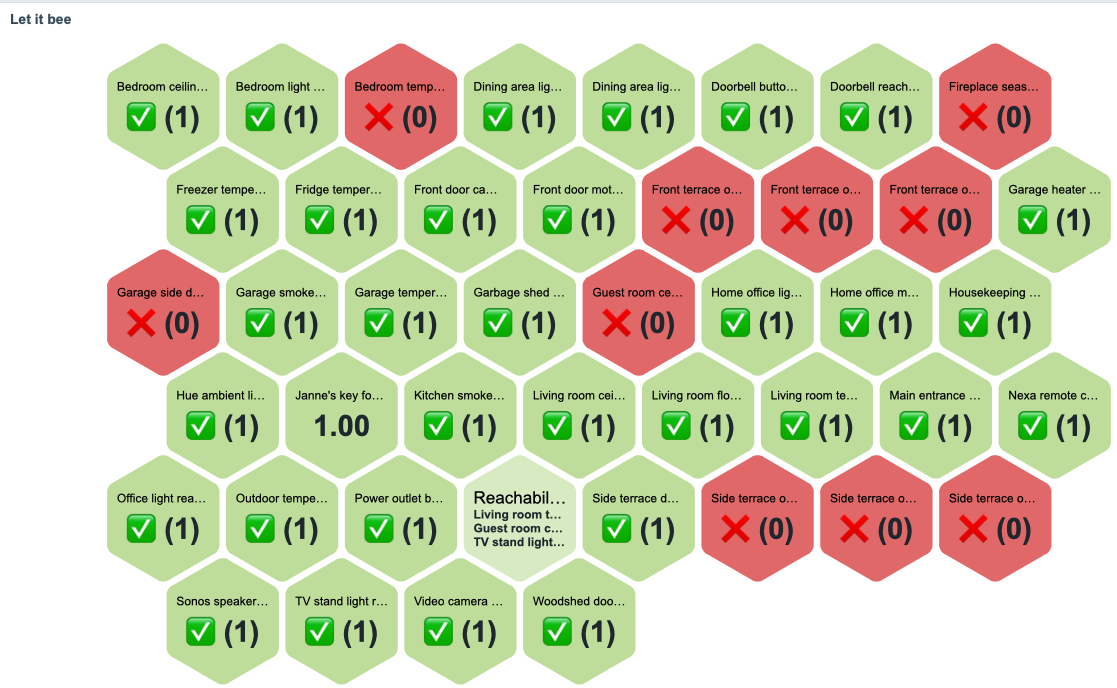Post Syndicated from Janne Pikkarainen original https://blog.zabbix.com/whats-up-home-welcome-zabbix-7-0beta3/27988/
When Zabbix 7.0beta3 got released, I immediately updated my What’s up, home? environment to run it. As usual, the update process was seamless and fast, going through everything in about a minute with my Raspberry Pi 4.
As I updated Zabbix maybe ten minutes ago, these are very real-time impressions of the new version.

The new honeycomb widget
This new honeycomb widget might be useful! Here’s my first try with it, illustrating the reachability status of my IoT devices.

The text shown on widget combs can be modified freely as in the widget advanced config you can put there any Zabbix macro you want.

… or if you are such an eternal child that I am, just put there some static text:

The widget supports the new widget communication framework, so whatever item you click there can then be notified by other widgets on the dashboards, to make the experience more interactive.
Versatile host navigator widget
There’s another new widget in town, and its name is Host Navigator. With it, you can create a widget that groups your hosts with any criteria by their host groups, or tag values, and it looks like this.

If you then add new widgets or modify the existing ones on your dashboard to receive events from the Host Navigator widget, the changes on other widgets will be reflected in real time. You can also group the items by using multiple rules, for example, first by severity and then by host group, as shown below.

Nice for quick browsing!
Many more improvements
Underneath there’s more going on, but these two were the most visible additions. Other than that, new icons, Zabbix can now execute trigger actions much faster than before (apparently previously there was ~4 seconds lag, now it’s capable of acting in about 100 milliseconds if I read the ticket right), PDF reporting and streaming to external systems are not experimental anymore.
Another solid release marching towards the final version of Zabbix 7.0. In my home environment, these beta versions have been perfectly stable for me.
This post was originally published on the author’s page.
The post What’s Up, Home? – Welcome, Zabbix 7.0beta3 appeared first on Zabbix Blog.




